You can contact LEARNZ, part of CORE Education, at:
Postal Address:
PO Box 13 678,
Christchurch 8141,
New Zealand
There are thousands of earthquakes in New Zealand every year. Most are too small to be felt. Earthquakes happen when rocks suddenly break. If the break reaches the surface a fault line is created.
A fault is a break in the rocks that make up the Earth's crust, along which rocks on either side have moved past each other. Sometimes the blocks of rock on either side of a fault shift to a new position in just a few seconds. This sudden release of energy sends out seismic waves, or shock waves. These waves are felt as an earthquake.
The P-wave (primary or pressure wave) travels quickly through the Earth and through liquids. It forces the ground to move backwards and forwards. It is often heard rather than felt.
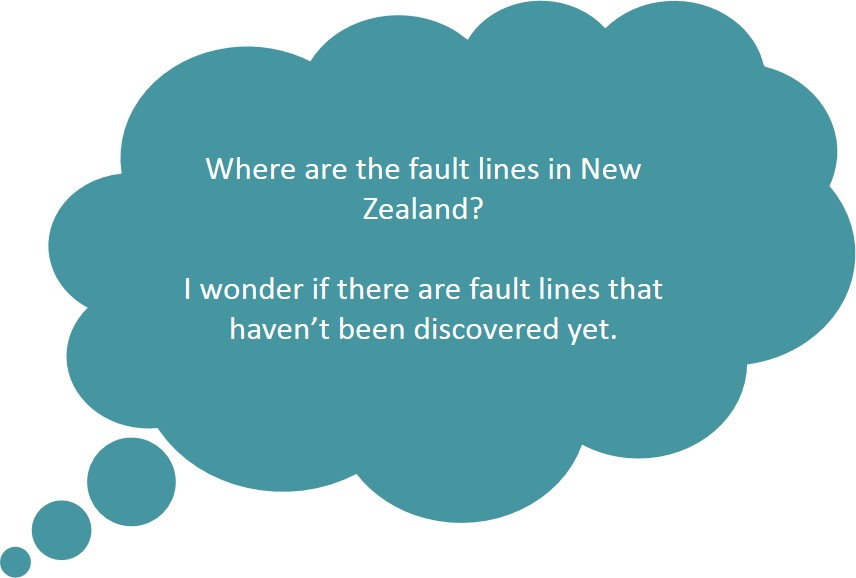
The S-wave (secondary or shear wave) follows more slowly. It shakes the ground up and down at right angles to the direction of the P-wave causing more damage.
Long before Europeans arrived, Māori had felt rū whenua which means ‘the shaking of the land’. In Māori tradition, earthquakes are caused by the god Rūaumoko, the son of Ranginui (the Sky) and his wife Papatūānuku (the Earth).
Rangi had been separated from Papa, and his tears had flooded the land. Their sons tried to turn their mother face down, so that she and Rangi would not see one another’s sorrow. When Papatūānuku was turned over, Rūaumoko was still at her side and was carried to the world below. To keep him warm he was given fire. He is the god of earthquakes and volcanoes, and the rumblings of the land are made by him as he walks about.
Several accounts of earthquakes felt by Māori were recorded by European writers. They described two large earthquakes, at Taupō and Rotorua. It was said that at Rotorua a pā with about 1,000 people was swallowed up, and the area became a lake.
Māori also spoke of two earthquakes along the Whanganui River in the 1830s.
The most powerful New Zealand earthquake in recent history happened in the Wairarapa in 1855. During this magnitude 8.2 earthquake part of the nearby Rimutaka Range rose more than 6 metres. This is the biggest known earthquake movement to have been recorded anywhere in the world.
A large earthquake could happen anywhere in New Zealand. But some areas have more than others. Wellington is one of the most active earthquake regions and Auckland one of the least. Large earthquakes can still happen in regions with lower activity. This is best seen by the recent events in Christchurch.
Based on history, New Zealand should have:
But earthquakes are not evenly spread over time and they often occur in clusters. A damaging earthquake could happen at any time.
You can find out more about earthquakes in New Zealand at http://www.geonet.org.nz/.
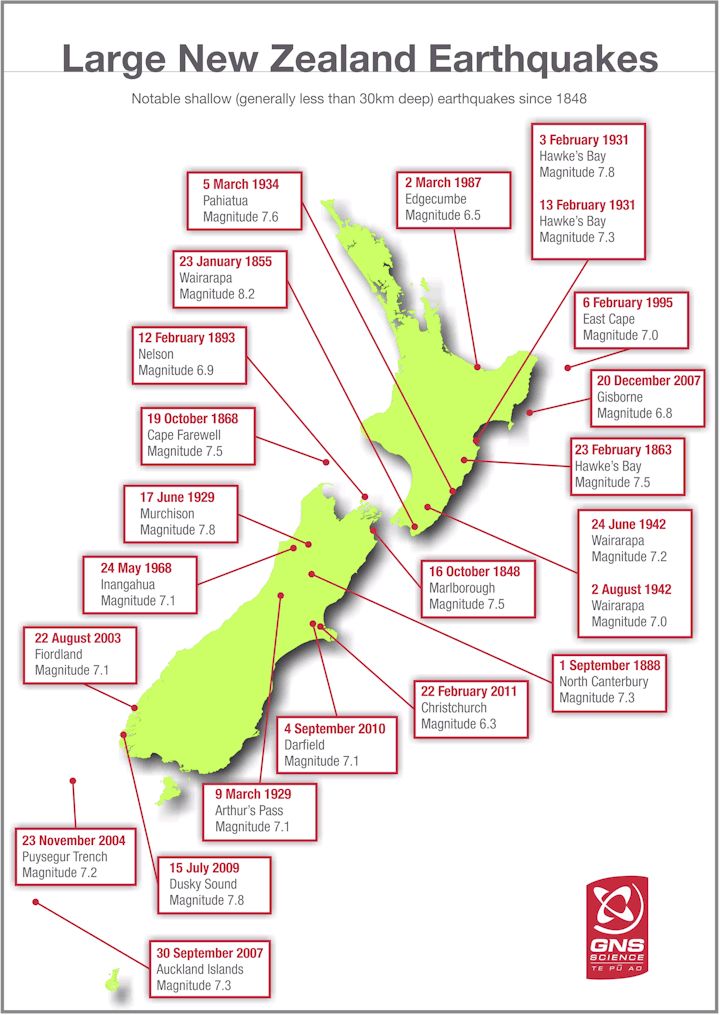
,Earthquakes happen in New Zealand every day but are usually too small to be felt. Some earthquakes, however, are large and have caused serious damage to property and even injured or killed people. Image: GNS Science.
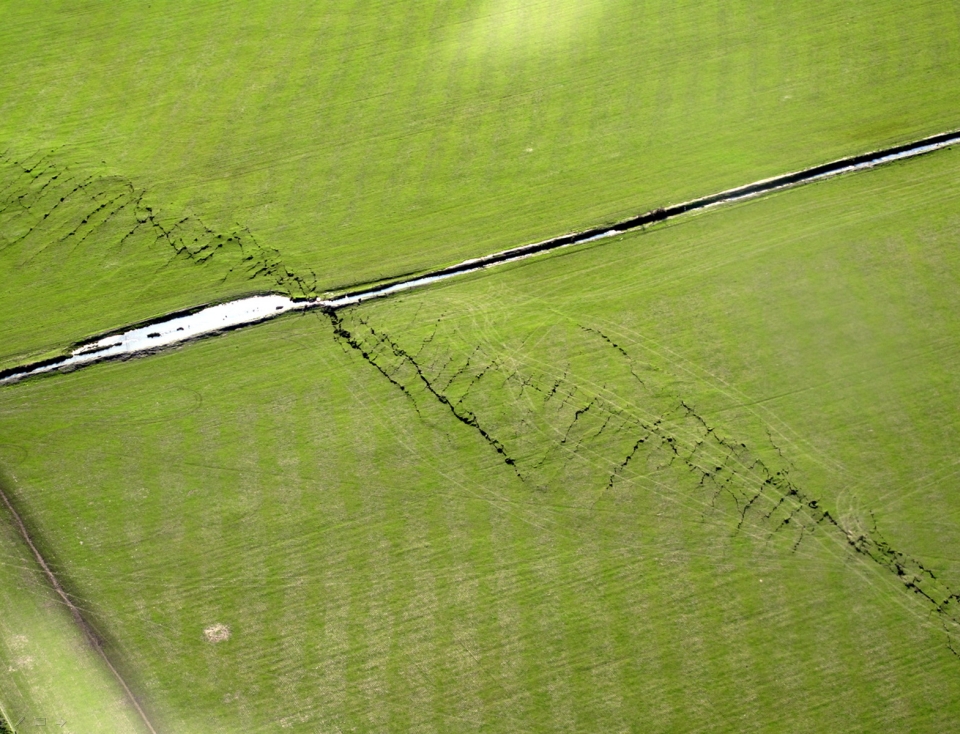
,Shallow earthquakes usually break to the Earth’s surface to create faults. Image: Geological & Nuclear Sciences - Lincoln University.
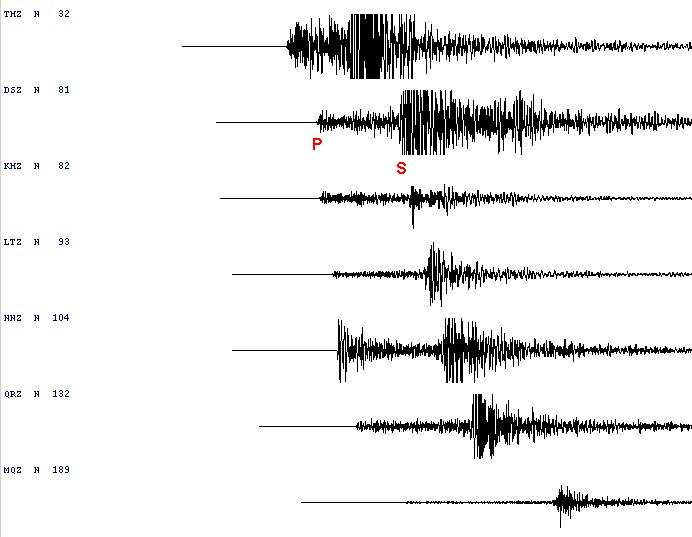
,The energy released by a fault movement radiates outwards as seismic waves. There are two types of seismic waves; P-waves and S-waves. Image: GNS Science.
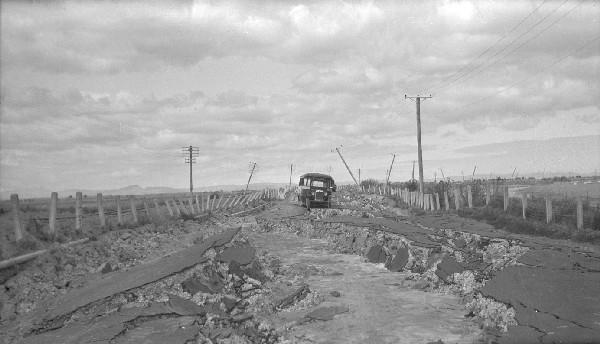
,The 1931 Napier earthquake left some roads badly damaged. Image: GNS Science.
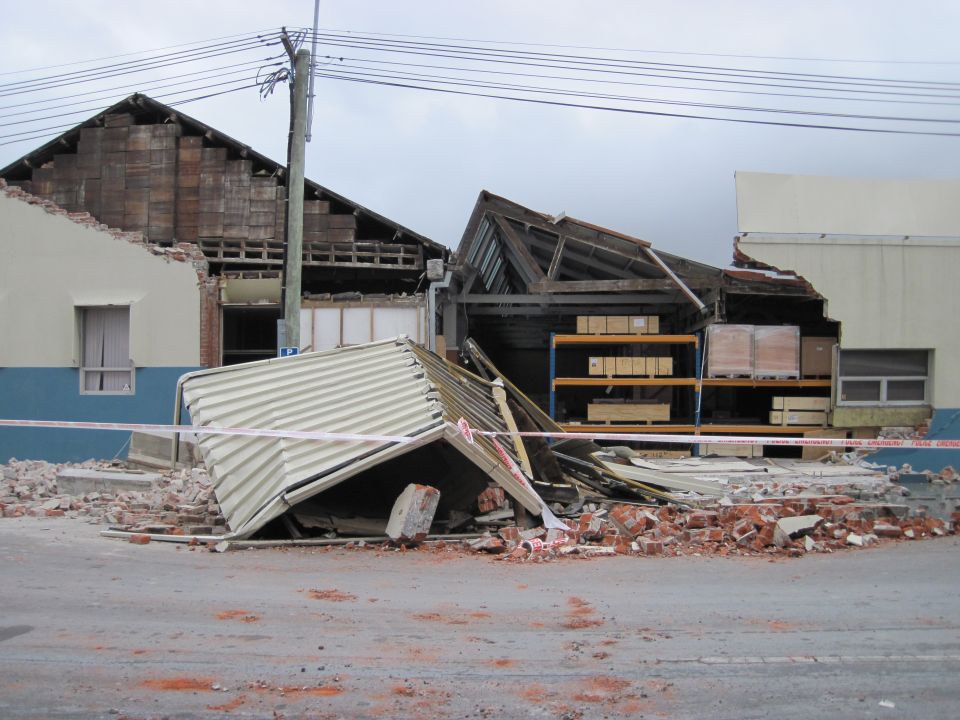
The 22 February, Christchurch earthquake caused a lot of damage. Image: LEARNZ.
Check out the GeoNet recent earthquakes webpage to see if there have been any earthquakes today and where they were centred.